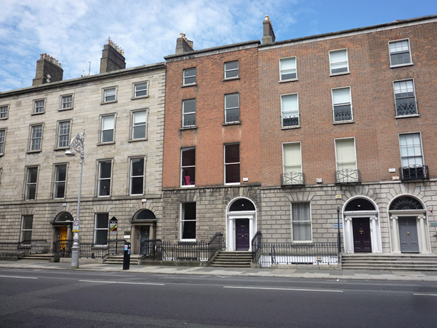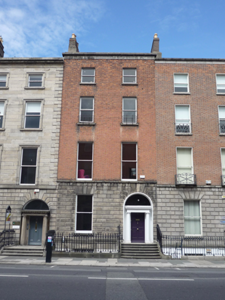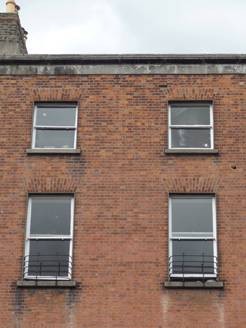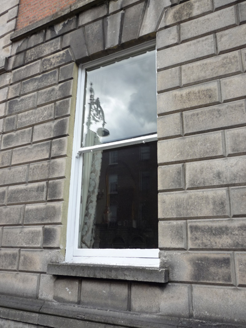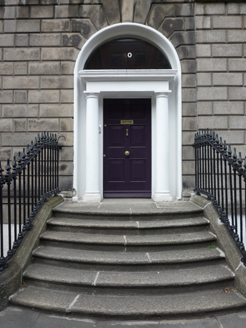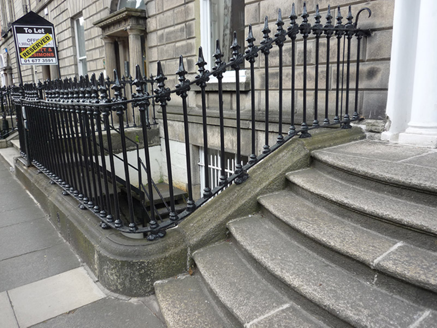Survey Data
Reg No
50930205
Rating
Regional
Categories of Special Interest
Architectural, Artistic
Original Use
House
In Use As
House
Date
1835 - 1845
Coordinates
316467, 232902
Date Recorded
25/07/2015
Date Updated
--/--/--
Description
Terraced two-bay four-storey townhouse over basement, built c. 1840, with two stage return to rear. M-profile slate roof, hipped to north, concealed by ashlar granite parapet with moulded cornice and coping, pair of brick chimneys (partially rendered) to north and south party walls with clay pots, parapet gutters and cast-iron rainwater goods to rear. Red brick walls in Flemish bond, rusticated granite walling to ground floor level over painted coursed ashlar limestone basement with granite stringcourse. Square-headed window openings with brick voussoirs, patent reveals, projecting granite sills, replacement one-over-one timber sashes with horns. Cast-iron guard rails affixed to surround at second floor windows. Block-and-start granite surround to basement window, with replacement three-over-twelve timber sash. Round-headed opening to principal (east) elevation with pole-moulded rendered reveals, projecting distyle Doric columned entablature, replacement plain glass fanlight and six-panelled timber door with brass furniture. Granite entrance platform accessed via six bowed steps. Original cast-iron railings to basement well affixed to granite plinth, replacement steel steps to basement level. Coal-hole cover to pavement. Converted two-storey three-bay mews building to west with pitched slate roof, roughly coursed rubble stone walls and replacement timber casement windows. Remnants of random rubble stone boundary wall to west along Kingram Place, having vehicular entrance and concrete piers.
Appraisal
This Georgian-style terraced townhouse, characterised by restrained detailing, vertical massing and well-balanced proportions, forms an integral part of Fitzwilliam Place. The retention of the boundary cast-iron railings and bowed granite steps serve to enrich and further enhance the street setting. The appearance of the overall terrace has been largely retained, despite the loss of historic fabric, including some original windows and fanlights. Although the streetscape is largely cohesive in appearance, slight variations between the groups of terraces on Fitzwilliam Place is illustrative of the incremental nature of speculative development during this period. The integrity of the rear boundary walls and mews buildings has been degraded across some of the terrace, through a combination of incremental alterations and recent interventions.
